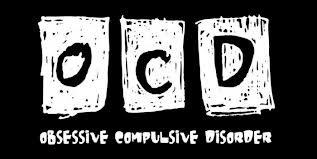Signs Of OCD By Dr. Ashish Khandelwal
According to Dr. Ashish Khandelwal, obsessive-compulsive conduct is the type of nervousness issue in which absurd contemplations and fears, which are fixations that lead one to do dull compulsive conduct. Underlying drivers of obsessive compulsiveness are mind-boggling and regularly profound situated. The fundamental enthusiastic states may incorporate the dread of obscure, not being in charge, negative results, disappointment, dismissal, disgrace, destruction or shame
Signs and indications of OCD
Psychiatrists in Railway Colony Faridabad says that most people with the obsessive-compulsive issue have the two fixations and impulses, however, a few people experience only either.
#Obsessive considerations:
Normal obsessive contemplations in OCD include:
- The dread of being tainted by germs or earth or debasing others
- The dread of losing control and hurting yourself or others
- Meddling explicitly unequivocal or vicious musings and pictures
- Over the top spotlight on religious or good thoughts
- The dread of losing or not having things you may require
- Request and symmetry: the possibility that everything must arrange "perfectly"
- Superstitions; exorbitant regard for something thought about fortunate or unfortunate
#Compulsive practices:
Regular compulsive practices in OCD include:
- Extreme twofold checking of things, for example, locks, apparatuses, and switches
- Over and over-monitoring friends and family to ensure they're protected
- Checking, tapping, rehashing certain words, or doing different silly things to lessen nervousness
- Investing a ton of energy washing or cleaning
- Requesting or orchestrating things "just so"
- Supplicating too much or taking part in ceremonies activated by religious dread
You can dispose of gentle obsessive impulse effectively, though, serious obsessive compulsiveness, require the backing of medicinal and emotional well-being experts.
- When you begin contemplating or fixating once again an action, you should attempt to stop the negative example, and give control and security.
A decent grapple code stops an obsessive idea design and gives certainty based security to the new activity. One can get it leveled out and recuperate from it, anyway at the present, there is no fix. It is a potential that will dependably be there out of sight, notwithstanding when one's life is never again influenced by it.
- The treatment for obsessive-compulsive conduct relies upon how much the condition is influencing the day by day life of the individual.
There are two fundamental medicines, right off the bat Cognitive-social treatment, which includes reviewing presentation and reaction anticipation and the second being drug. The psychological conduct treatment encourages one to confront one's dread and let the obsessive musings happen without killing them with impulses. In the second case, treatment is by the drug to control one's side effects by adjusting the equalization of synthetic concoctions in mind.
- Obsessive-compulsive conduct that has a moderately minor effect on one's day by day life is typically treated with a short course of subjective social treatment.
Subjective conduct treatment includes presentation and reaction avoidance that is utilized to help individuals with all severities. Individuals with gentle to direct conduct more often than not require around 10 hours of advisor treatment, joined with activities to be done at home between sessions. Those with moderate to extreme manifestations may require an increasingly escalated course of treatment that endures longer than 10 hours.
- Amid the sessions, one works with the advisor to separate the issues into their different parts like physical sentiments, considerations, and activities.
The specialist urges you to confront your dread and let the obsessive considerations happen without putting them right. It requires inspiration and one should begin with circumstances that reason the least uneasiness first. These presentation practices need to occur quite often and should be accomplished for one to two hours without taking part in impulses to fix them. Individuals with Obsessive-compulsive conduct find that when they stand up to their uneasiness without conveying the impulse, the nervousness leaves. Each time, the odds of nervousness decreases and keep going for a shorter timeframe.
- When you have one presentation task, you can proceed onward to a progressively troublesome errand, until you have defeated the majority of the circumstances that make you on edge.
It is critical to recollect it can take a while before treatment has a detectable impact. It is amazingly essential to recall that nobody is impeccable, nor would anyone be able to recuperate superbly. Indeed, even in very much looked after recuperation, individuals can periodically fail and overlook what they should do.
Signs and indications of OCD
Psychiatrists in Railway Colony Faridabad says that most people with the obsessive-compulsive issue have the two fixations and impulses, however, a few people experience only either.
#Obsessive considerations:
Normal obsessive contemplations in OCD include:
- The dread of being tainted by germs or earth or debasing others
- The dread of losing control and hurting yourself or others
- Meddling explicitly unequivocal or vicious musings and pictures
- Over the top spotlight on religious or good thoughts
- The dread of losing or not having things you may require
- Request and symmetry: the possibility that everything must arrange "perfectly"
- Superstitions; exorbitant regard for something thought about fortunate or unfortunate
#Compulsive practices:
Regular compulsive practices in OCD include:
- Extreme twofold checking of things, for example, locks, apparatuses, and switches
- Over and over-monitoring friends and family to ensure they're protected
- Checking, tapping, rehashing certain words, or doing different silly things to lessen nervousness
- Investing a ton of energy washing or cleaning
- Requesting or orchestrating things "just so"
- Supplicating too much or taking part in ceremonies activated by religious dread
You can dispose of gentle obsessive impulse effectively, though, serious obsessive compulsiveness, require the backing of medicinal and emotional well-being experts.
- When you begin contemplating or fixating once again an action, you should attempt to stop the negative example, and give control and security.
A decent grapple code stops an obsessive idea design and gives certainty based security to the new activity. One can get it leveled out and recuperate from it, anyway at the present, there is no fix. It is a potential that will dependably be there out of sight, notwithstanding when one's life is never again influenced by it.
- The treatment for obsessive-compulsive conduct relies upon how much the condition is influencing the day by day life of the individual.
There are two fundamental medicines, right off the bat Cognitive-social treatment, which includes reviewing presentation and reaction anticipation and the second being drug. The psychological conduct treatment encourages one to confront one's dread and let the obsessive musings happen without killing them with impulses. In the second case, treatment is by the drug to control one's side effects by adjusting the equalization of synthetic concoctions in mind.
- Obsessive-compulsive conduct that has a moderately minor effect on one's day by day life is typically treated with a short course of subjective social treatment.
Subjective conduct treatment includes presentation and reaction avoidance that is utilized to help individuals with all severities. Individuals with gentle to direct conduct more often than not require around 10 hours of advisor treatment, joined with activities to be done at home between sessions. Those with moderate to extreme manifestations may require an increasingly escalated course of treatment that endures longer than 10 hours.
- Amid the sessions, one works with the advisor to separate the issues into their different parts like physical sentiments, considerations, and activities.
The specialist urges you to confront your dread and let the obsessive considerations happen without putting them right. It requires inspiration and one should begin with circumstances that reason the least uneasiness first. These presentation practices need to occur quite often and should be accomplished for one to two hours without taking part in impulses to fix them. Individuals with Obsessive-compulsive conduct find that when they stand up to their uneasiness without conveying the impulse, the nervousness leaves. Each time, the odds of nervousness decreases and keep going for a shorter timeframe.
- When you have one presentation task, you can proceed onward to a progressively troublesome errand, until you have defeated the majority of the circumstances that make you on edge.
It is critical to recollect it can take a while before treatment has a detectable impact. It is amazingly essential to recall that nobody is impeccable, nor would anyone be able to recuperate superbly. Indeed, even in very much looked after recuperation, individuals can periodically fail and overlook what they should do.



Comments
Post a Comment